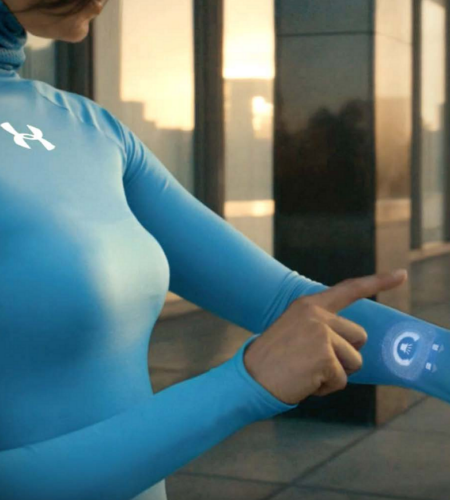Wearable technology has come a long way since the days when fitness trackers were the latest craze. What began as simple devices counting steps and tracking calories has blossomed into a sophisticated array of gadgets poised to revolutionize our daily lives. As we look to the future, wearable tech is set to go far beyond fitness tracking, offering innovations that could transform health, communication, entertainment, and much more. Let’s dive into the latest advancements and their potential impacts.
Health Monitoring and Medical Applications
One of the most exciting developments in wearable tech is its growing role in health monitoring and medical applications. Modern wearables now track a wide range of health metrics, from heart rate and sleep patterns to blood oxygen levels and ECGs. Companies like Apple and Fitbit have incorporated these features into their devices, providing users with comprehensive health data at their fingertips.
But the future holds even more promise. Researchers are developing wearable devices capable of monitoring glucose levels for diabetics, detecting early signs of illnesses through sweat analysis, and even predicting heart attacks by analyzing subtle changes in body signals. These advancements could lead to earlier diagnosis, better disease management, and ultimately, improved health outcomes.
Energy Harvesting Innovations

(Photo credit: Prof. Jinkee Hong and Dr. Hyungseok Yong, Yonsei University)
One groundbreaking advancement in wearable tech is energy harvesting. Innovative companies like Epeas are working on ambient energy harvesting solutions, which involve converting body heat, movement, or solar energy into power. This means that future wearables might not need to be actively charged, significantly enhancing convenience and usability.
Haptic Technology and Immersive Experiences
Haptic technology is another exciting frontier in wearable tech. This technology creates experiences by applying forces, vibrations, or motions to control virtual objects, providing realistic touch sensations during human-computer interactions. Engineers are working on various haptic devices, which can be grouped into three main types: graspable, wearable, and touchable.
Graspable gadgets are used by professionals like doctors to operate remotely or by engineers to repair space satellites from Earth. Wearable haptic devices can communicate through vibration and can be integrated into clothing to provide directions or assist in virtual environments. Touchable interfaces, such as those on smartphone screens, allow users to feel various textures remotely, which holds great promise for online shopping and virtual travel.
Fashion and Personal Expression
Wearable tech is also making its mark in the fashion industry. Smart clothing and accessories are blending technology with style, offering consumers new ways to express themselves while staying connected. From jackets that can charge your devices to jewelry that tracks your activity, the fusion of fashion and technology is creating products that are both functional and stylish.
In the future, we can expect even more innovations in this space. Smart fabrics that change color or pattern based on your mood or environment, self-heating jackets for cold weather, and shoes that adjust their fit for comfort are just a few examples of what’s possible. These advancements not only enhance convenience but also allow for greater personalization and self-expression.
Workplace Productivity and Safety

Wearable tech is set to revolutionize the workplace by enhancing productivity and safety. Devices like smart helmets and vests can monitor workers’ vital signs and alert them to potential hazards, reducing the risk of accidents. Wearable exoskeletons can assist with heavy lifting, reducing strain and preventing injuries.
In offices, wearables can track employee wellness, promoting healthier habits and reducing stress. For remote workers, wearables can help maintain a connection with the team, provide reminders to take breaks, and even facilitate virtual meetings. These innovations can lead to healthier, happier, and more productive work environments.
Environmental Monitoring
Another fascinating application of wearable technology is in environmental monitoring. Wearables equipped with sensors can track air quality, UV exposure, and other environmental factors, providing users with real-time data to make informed decisions about their activities. This information can be crucial for individuals with health conditions affected by environmental factors, such as asthma or allergies.
In the future, we might see wearables that can detect pollutants, alert users to hazardous conditions, and even provide recommendations for safer routes or healthier lifestyle choices. This kind of proactive health and safety monitoring has the potential to significantly enhance quality of life.
Personal Security

Personal security is another area where wearables are making strides. Devices like smart rings and bracelets can now serve as personal safety tools, equipped with features like panic buttons, GPS tracking, and emergency alerts. These wearables can provide a sense of security, especially for individuals in vulnerable situations.
Looking ahead, we can anticipate more sophisticated security features integrated into everyday wearables, from biometric authentication to real-time threat detection. These advancements could help prevent crimes and ensure personal safety in various scenarios.
The Bottom Line
The future of wearable technology is bright and full of potential. With the global market size projected to reach to reach $265.4 billion by 2026, the growth in this sector is undeniable. As these devices become more advanced, they will continue to integrate seamlessly into our lives, offering benefits that go far beyond fitness tracking. From health monitoring and medical applications to enhanced communication, entertainment, and personal security, wearable tech is set to revolutionize the way we live, work, and play. The possibilities are endless, and the future of wearable tech promises to be both exciting and transformative.


